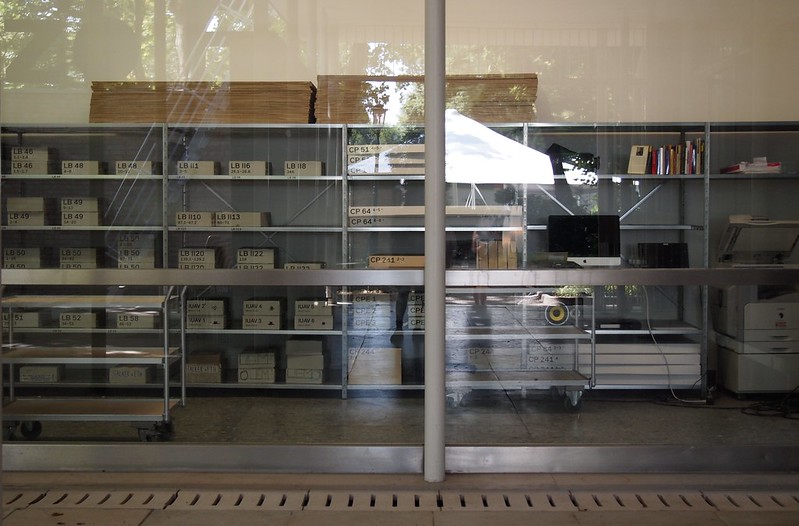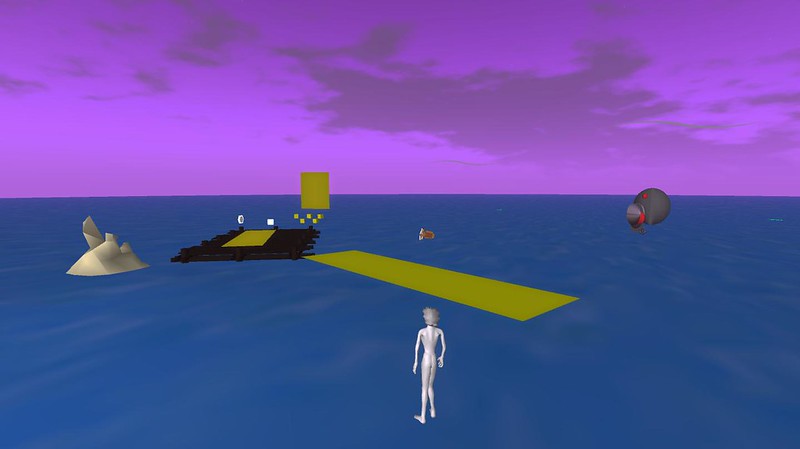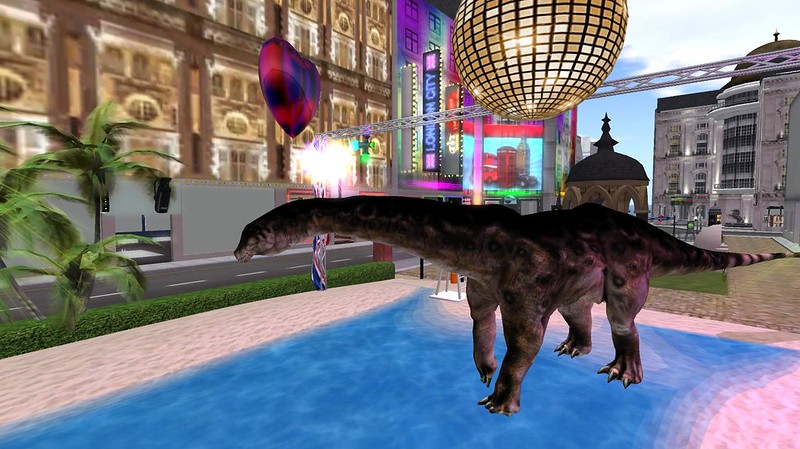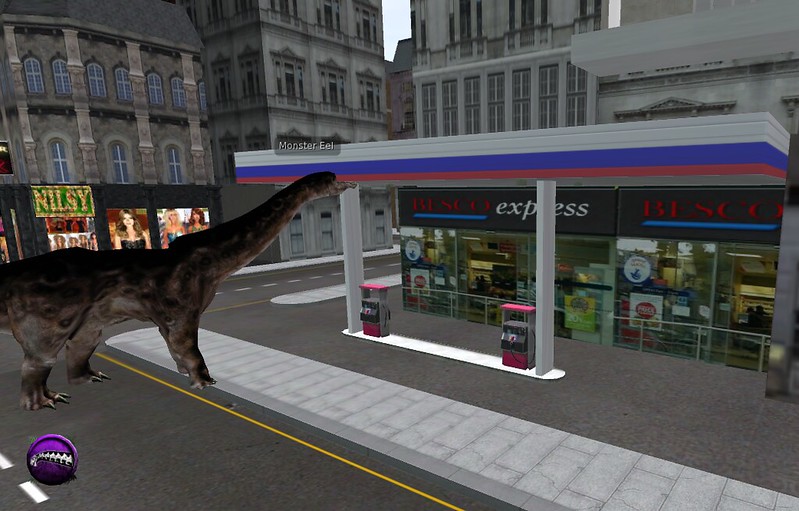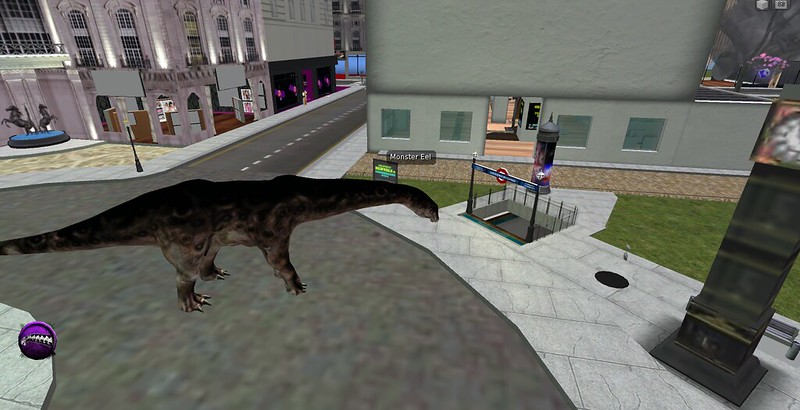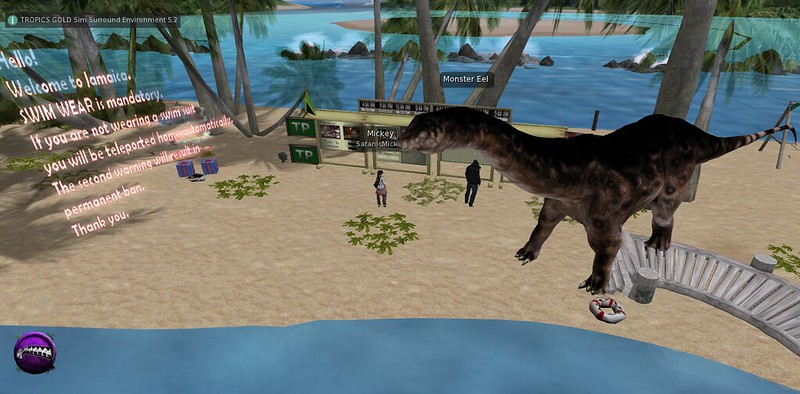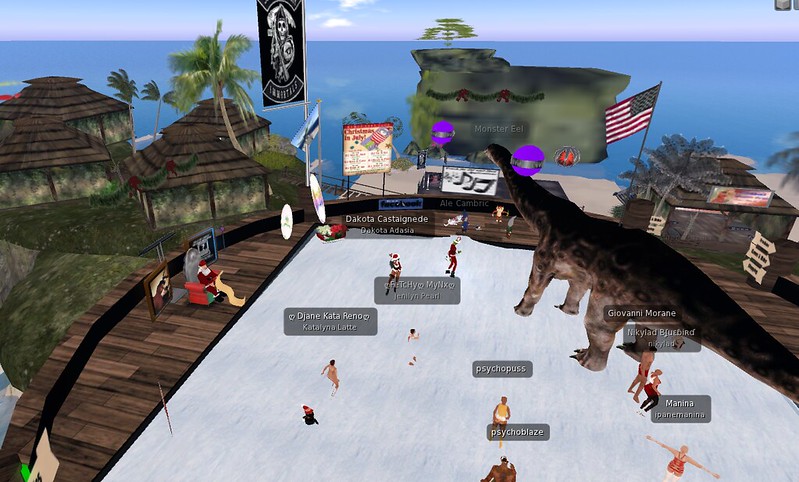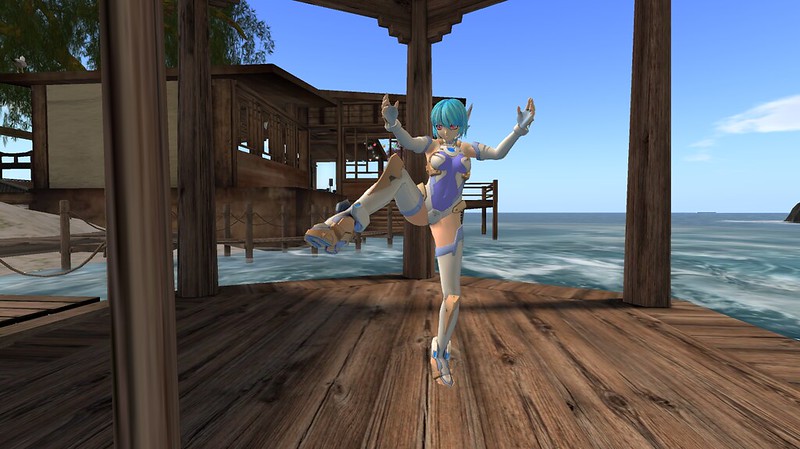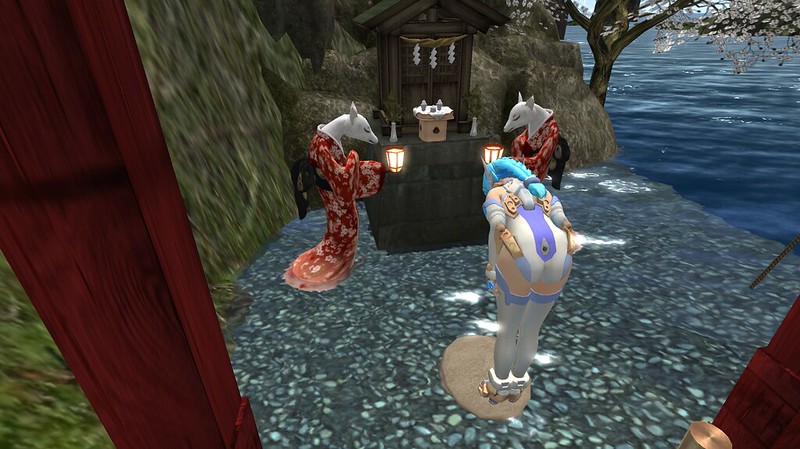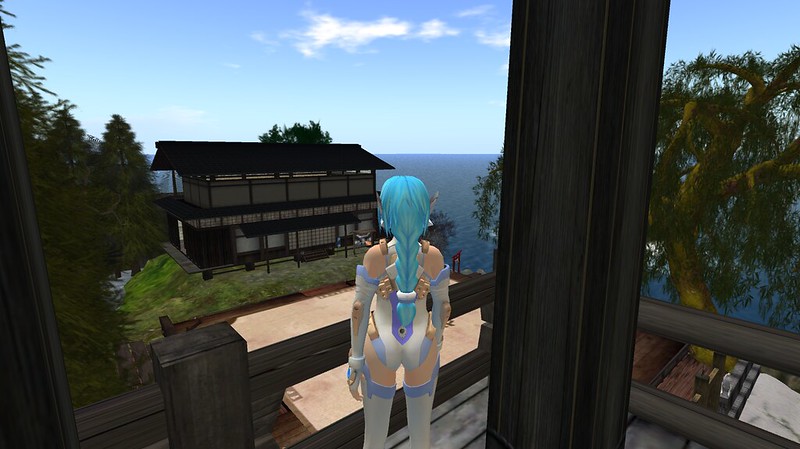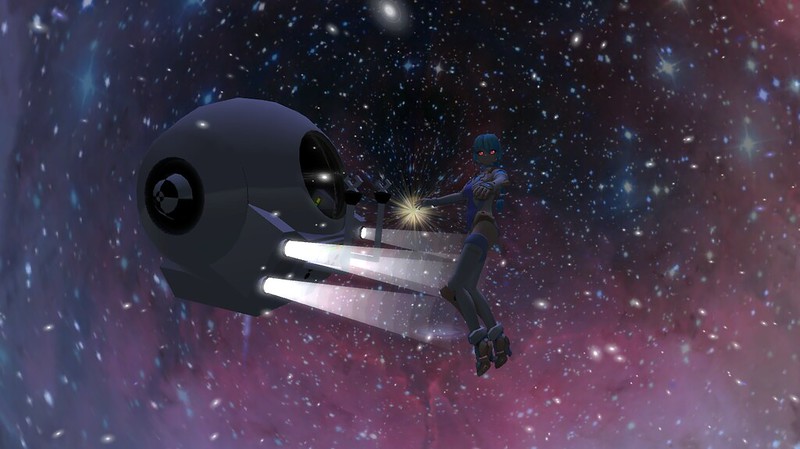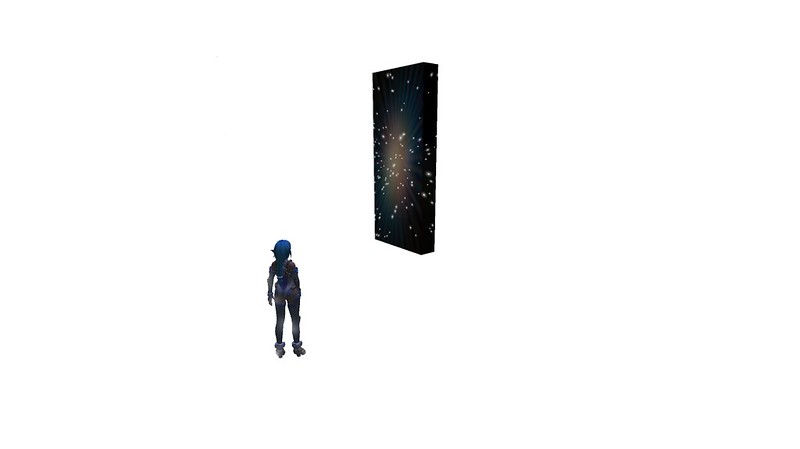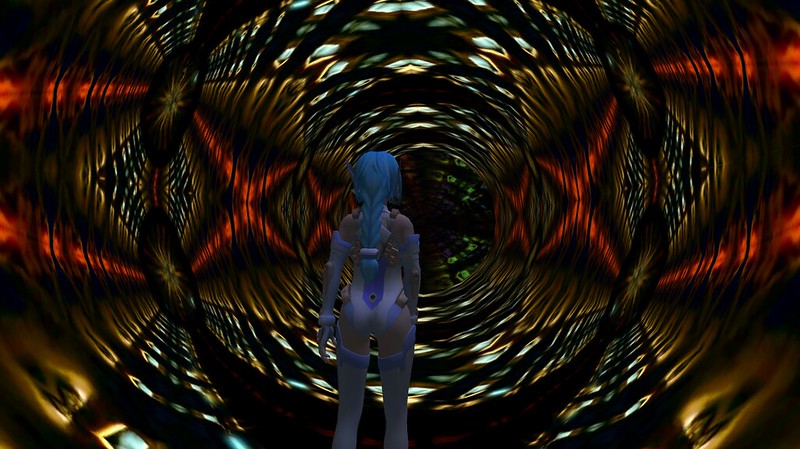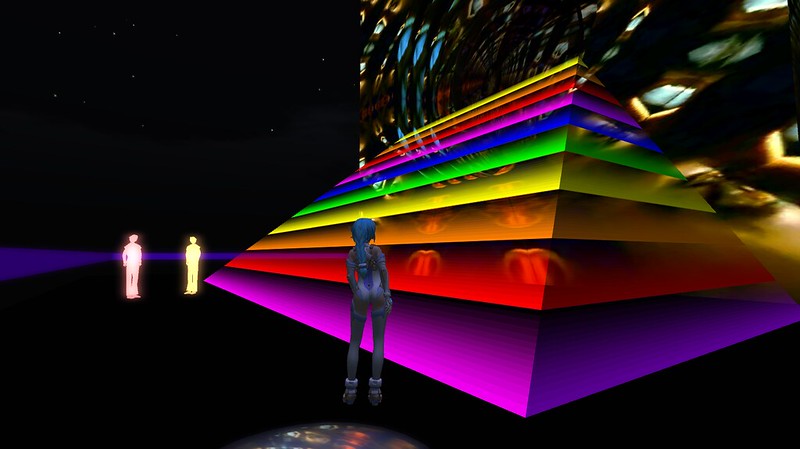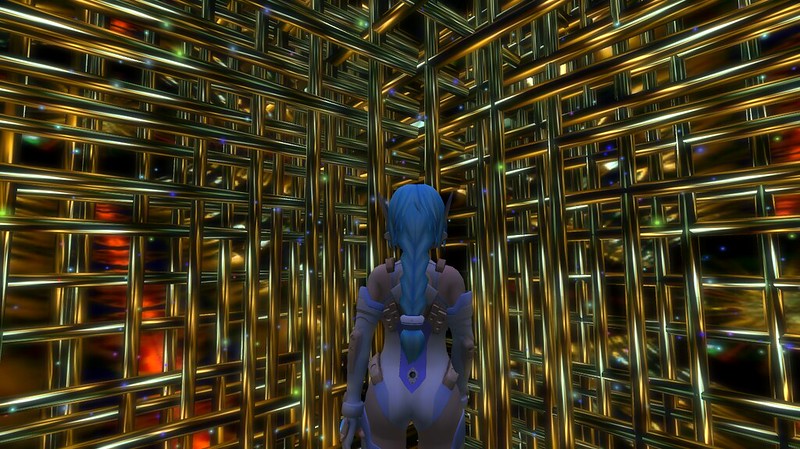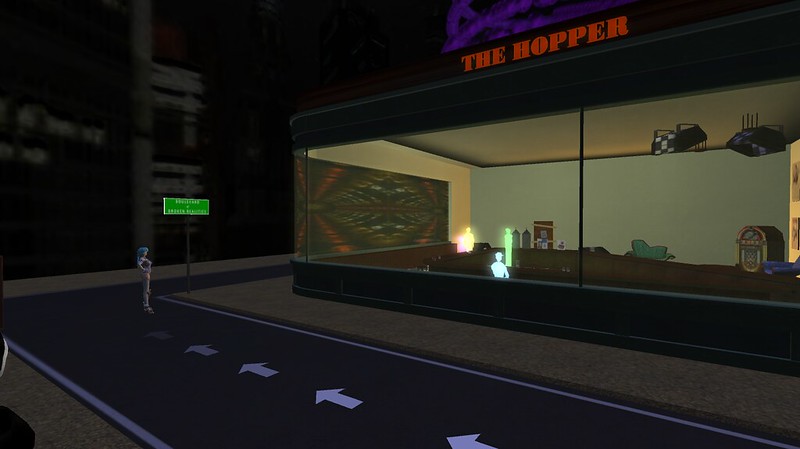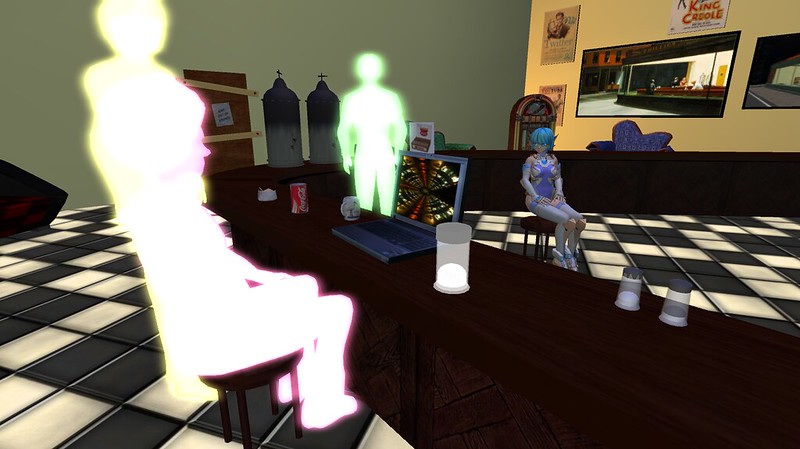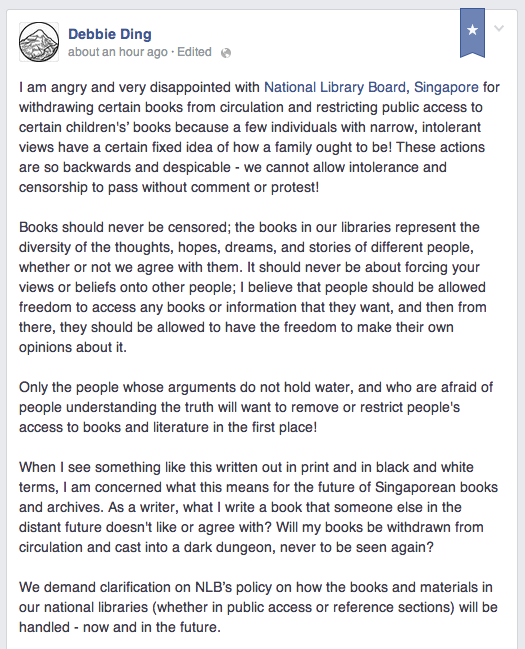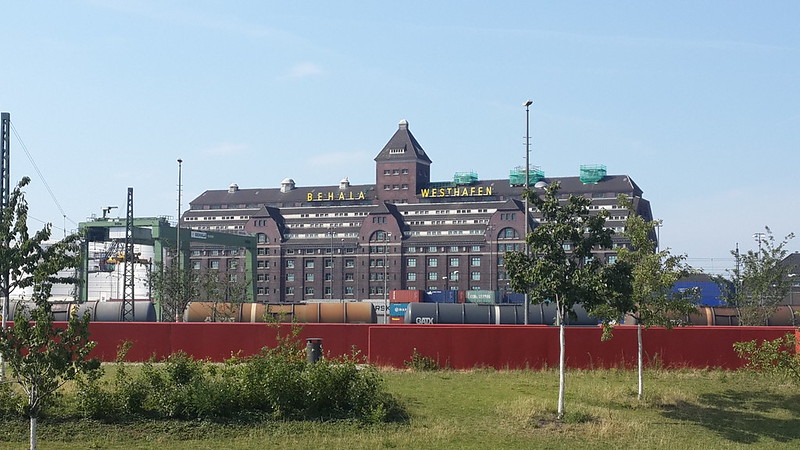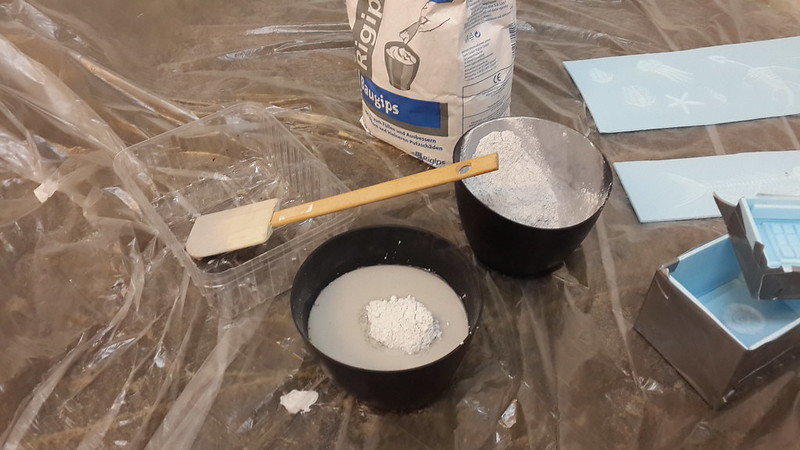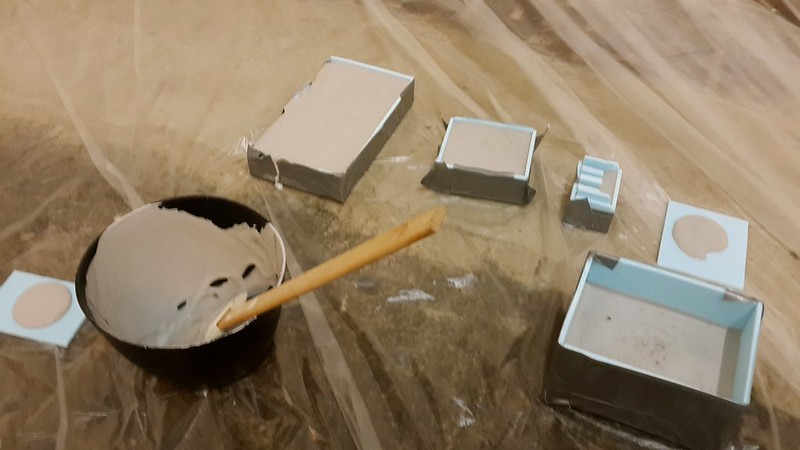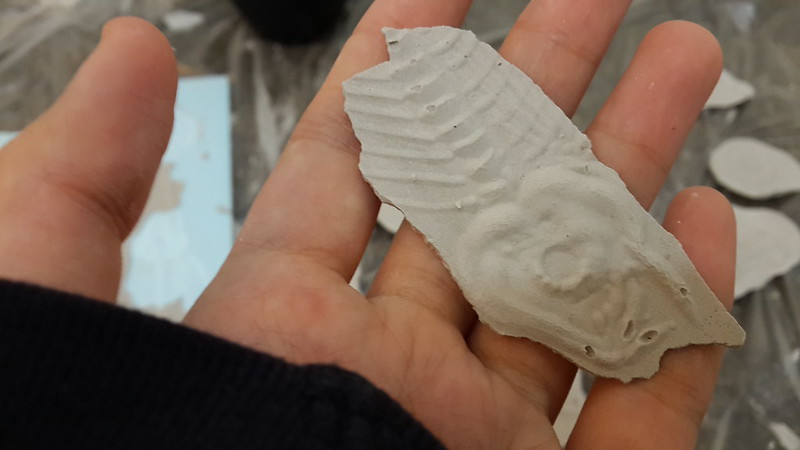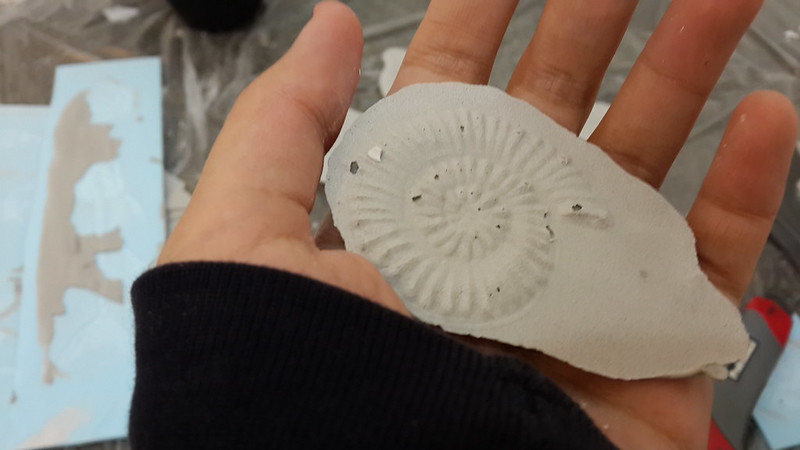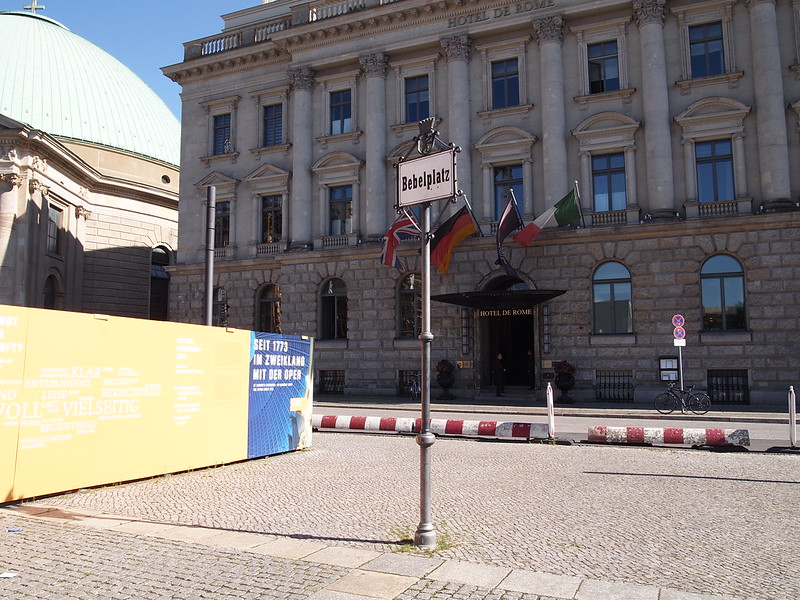
Today I had a walk around Mitte in Berlin, and I went past Bebelplatz.

On 10 May 1933, in this open square next to the opera house and Humboldt University, over 20,000 books were burnt in the square after Joseph Goebbels gave an incendiary speech to a crowd of 40,000 people and students. The entire library of the Institut für Sexualwissenschaft (Institute of Sex Research) was first to go; dragged out on the streets and burnt to ashes. Books by numerous Jewish writers and pacifists were also pulled out from nearby public libraries and burnt. These included works by Heinrich Mann, Heinrich Heine, Stefan Zweig, Karl Marx, Albert Einstein, Kurt Tucholsky, and Erich Maria Remarque.
The Institut für Sexualwissenschaft was a non-profit foundation which conducted research on sexuality with regards to medicine, psychology, and ethnography. The Institute also had been an early advocate of sex education, contraception, and had been campaigning for the civil rights and acceptance of homosexual and transgender people.
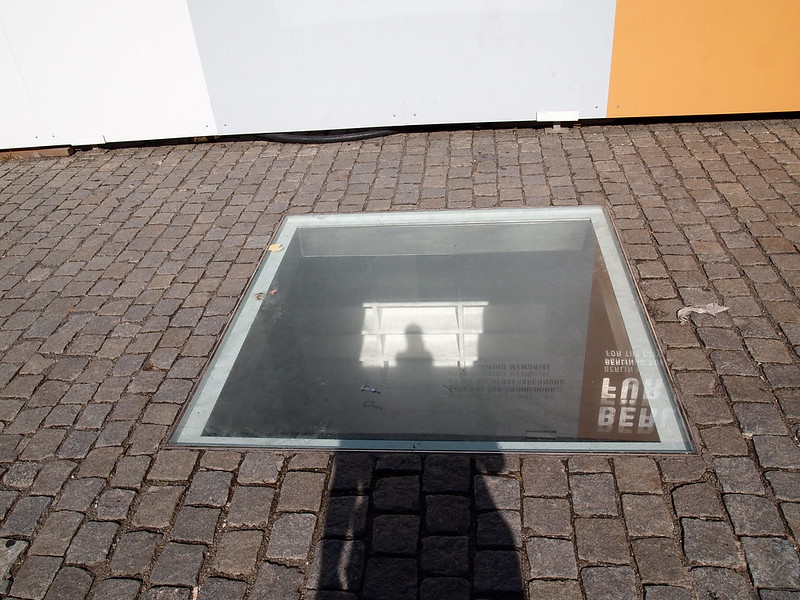
The Book-burning Memorial by Israeli artist Micha Ullman - consisting of an empty subterranean library that could have held 20,000 books
10 JULY 2014, STRAITS TIMES, SINGAPORE: Three children's titles recently removed by the National Library Board (NLB) as they were deemed not "pro-family" will not be put back on the public libraries' shelves. The three titles are: And Tango Makes Three, The White Swan Express: A Story About Adoption, and Who's In My Family: All About Our Families.
In a press conference held at the children's section of the Toa Payoh Public Library, Ms Jasna Dhansukhlal, assistant director of NLB's public library services, said the books will go through a "discarding process" where they will be pulped...
Pulped! One would reasonably expect that a library is a place where books will be kept safe, and where they would be a champion of freedom of information and speech. Yet this is not the case at the National Library Board; who after receiving a petition requesting for the books to be reinstated, instead announced that they decided that they would stick with their "pro-family" stand, and would be in fact pulping the books!
The pulping and destruction of literature because it isn't aligned with a particular set of values is something that a library should never be engaged in. Even with the way Singapore is generally thought of to be conservative, never did I expect that they would say that they would pulp the books to be withdrawn. Were we even talking about the same place where I spent hours and hours reading in the reference section as a young teenager? With one fell swoop they were going to stain all my happy hours there with the horror of imagining all the unknown books they may have withdrawn and destroyed over the years due to some conservative and religious complainants. At some point I had outgrown the National Library and had wondered why its collections in its public sections were so sparse and unrepresentative of the vast literature out there, and I thought it was likelier to be from a failure to acquire the books, rather than the possibility of there having been a slow but systematic culling of books along the way. But now even we cannot be sure, because we do not have the numbers.
There are also a few separate issues at stake here: (1) BIGOTRY: Can our national library be allowed to be openly anti-LGBTQ? should the library be allowed to impose a moralistic "pro-family" (anti-LGBTQ) policy over its public access collections and withdraw those books which do not reflect those so-called "community norms"? (2) CENSORSHIP: Can our national library be allowed to play moral watchdog and censor materials at will? Why should they be allowed to define what is an acceptable family structure, and why is it defined in such a narrow way? and (3) ACCOUNTABILITY & TRANSPARENCY: Can the library can be trusted to make the right decisions when it has shown that it is not accountable and transparent in its actions? Should a library be empowered to quietly withdraw books from their collection at will if a single individual with his or her personal moralistic/religious agenda complains about a book?
We do not have a Freedom of Information act in Singapore, therefore there is no official instrument with which to request for NLB to make the list of books which they have withdrawn public, unless they decide on their own to make this information public. The government-citizen relationship in Singapore is still largely a nanny-state in which the government exerts power over the people by withholding data and information, and by doing so restricting people from making autonomous decisions. For example, the belief that the government controls everything continues to influences people's behaviour, as evidenced from how opposition parties still have to reassure some voters that nothing bad will happen to them if they vote for the opposition.
A few days ago the government also announced that they would not be bringing Article 5(2A) of the Constitution into force, which means that it can make amendments to our Constitution without having a vote. The reason they cited was that they might want to make refinements to our tax system and the basis on which the Government can draw on net investment returns for current spending, so being able to amend the Constitution would save Singaporeans from the process of a potentially lengthy and protracted national referendum.
The issue then, is whether you trust the government to do exactly as they say, and whether you trust that the Government will truly be able to do everything in the people's interests.
Unfortunately, this is not a perfect world that we live in. I am always suspicious if I hear someone tell me that they know what's best for me - assuming that they must know better than I know it myself. As a logical and thinking individual, I would like to be able to make the decision for myself, instead of letting someone else summarily make the decision for me. It is not that I am being contrary for the sake of being contrary, but it is simply that I would like to understand how everything works for myself before I have an opinion, and to have the autonomy of making choices for myself. For me, this autonomy of choices also forms the basis of a democratic society, in a space where we can have open and honest discourse.
It is interesting to note how the destruction of those books is often very carefully rationalised by those who are homophobic; in all the reports, the suppression of the books is always described as a kind of positive action on the part of homophobics to stem the "pollution" before it "infects children". They describe the complete eradication of books with any representations of LGBTQ people (and penguins) as a way to attain a better society with better values, with none of that terrible corrupting gay influence.
The Nazis also used a lot of propaganda aimed at educating children and students about the so-called corrupting influences of the Jewish and gay people, to the point where the burning of libraries became a way of showing support for the government. They also had a War Manual, the "Kriegsbrauch im Landkriege" (The Usages of War on Land), in which they formally justified terrorising civilians and destroying the cultural capital of their enemies as such: "War cannot be conducted merely against the combatants of an enemy state but must seek to destroy the total material and intellectual (geistig) resources of the enemy."
In "Libricide: The Regime-Sponsored Destruction of Books and Libraries in the Twentieth Century", Rebecca Knuth writes an account of how the Nazis even made a point of their tactics of cultural warfare by completely destroying the same Louvain Library in Belgium not once but twice! - during both world wars, even though they had already been rebuked and widely deplored the first time around, and the US and Britain had spent considerable effort trying to rebuild the library only for the Nazis to destroy it for a second time.
I am disappointed to see so many people who have graduated from my alma mater National University of Singapore, saying such terrible things and supporting NLB's destructive actions in the name of so-called "pro-family values". In all of my years of education in Singapore, I was never taught to hate and discriminate and to force my views on to others! What happened to make so many Singaporeans so ignorant and intolerant of differences in views?
Has there been a lack of exposure to the outside world and the realities that exist outside it? Do these people know that many countries around the world recognise the human rights of LGBTQ people and ban all anti-gay discrimination? In countries such as UK, Denmark, Norway, Sweden, and Iceland same-sex marriages and same-sex adoption have been legalised as well. Those countries are all doing pretty fine and nothing much has changed, except that more people now have their human rights recognised.
To me, it seems that Singapore's public libraries and education system have completely failed if all they have done is to produce so many ignorant and intolerant people today who cannot think for themselves - people who would rather let the state control and define what their children can or cannot read, because they are apparently afraid that their children will become corrupted by a single book - presumably because they feel incapable of thinking for themselves after years of being told what to do - by their religious leaders or by the government.
Books and the dissemination of information through printing and technology are the very things which have enabled us to create and share ideas of identity, individualism, human rights, and even the idea of a nation. These are all potentially ideas and notions which different people may have very different views about.
How can a National Library be allowed to pulp books based on a single complaint without further consideration of other people's points of view? If it can pulp few children's books like this, how can it be trusted to manage the National Archives of Singapore, which moved under the National Library Board in 2012? A library that continues to promote intolerance, bigotry and destroys books should not be managing our National Archives, or the archive of books deposited by Singaporean authors by legal deposition.
Today as I walked around Bebelplatz, I was accosted by endless streams of young American and British tourists in huge numbers, distinctly audible from their accents, which made me bristle with the annoyance I frequently get in a place overrun by tourists and generic packaged tour groups; the pre-packaged, simplified narrative that tour groups invariably assign to hot tourist destinations. There was a tour guide standing close to me giving a description of the square to a dozen teenagers, talking about the significance of books and why the burning of books was such a terrible atrocity that should never be repeated again.
To me, it sounded so obvious and logical that his statements came across almost trite. Likewise I also find that my entire article is nothing more than stating the obvious. Yet as obvious as it seems, in the end it is a lesson that many still have not learnt.
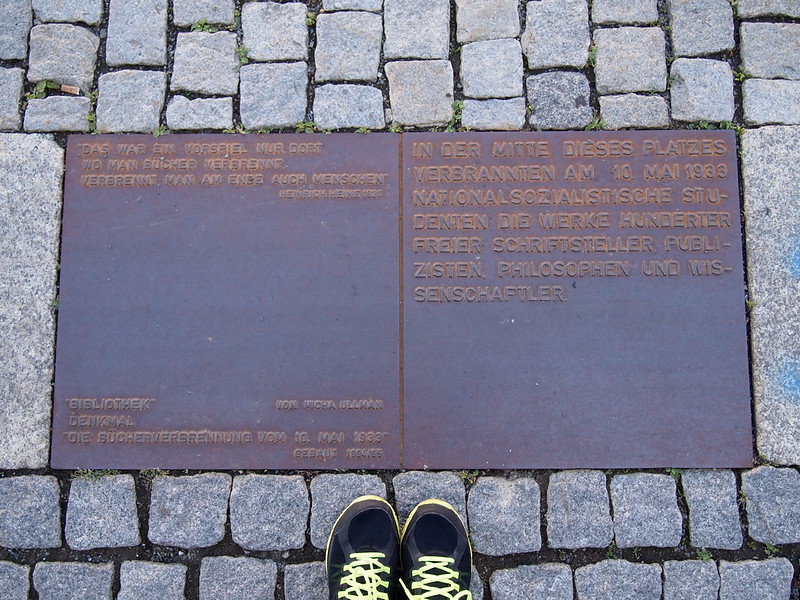
Das war ein Vorspiel nur dort
wo man Bücher verbrennt,
verbrennt man am Ende auch Menschen
- Heinrich Heine 1820 | That was only a prelude, there
where they burn books,
they burn in the end people.
- Heinrich Heine 1820 |

